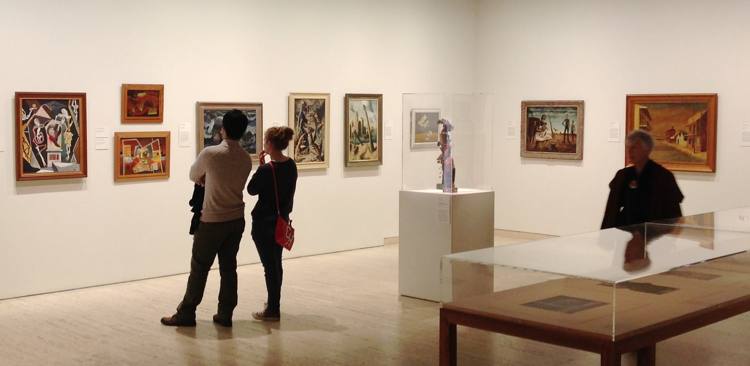I have just been re-reading an excellent book by Justin Paton (curator of contemporary art at the Art Gallery of NSW), “How to look at a painting”. Near the end of the book, he gives some very useful advice in ten points, which I would like to share with you.
1. Respect the thing.
2. Take your sweet time. One painting seen well beats dozens seen in a state of perspiration and frustration.
…
5. That said, see as many paintings as you can, and then hunt for more. The fuller your image bank is with remembered paintings, the richer your responses will be to new ones.
4. When looking at a painting, before answering the question ‘What do I think?’ try ‘What did I notice?’ No opinions without observations.
5. If you’re troubled by an apparent lack – not enough colour, not enough imagery — try turning the doubt into a question. What would an artist have to gain by losing those things? What is he or she inviting you to notice in their absence? You may feel previously unnoticed aspects of a painting emerging with new sharpness.
6. Seek out writers as guides through that foreign country, the past. Trying to imagine your way into a painting’s life without picturing the time and place that produced it is like trying to understand fish without considering water. And pay no attention to those who say they don’t read about paintings because the words get in the way. They had to use words to tell you that, after all.
7. If a work doesn’t feel as though it’s for you, try imagining the person it is for. At the very least, you will have stepped outside the circle of your accustomed tastes. You might even find yourself enjoying it out there.
8. At any one time, the amount of average or downright wretched art exceeds the other kind by an alarming ratio. If an artwork’s giving you nothing, there’s no shame in turning your back. Remember, though, that if you don’t occasionally wade through art’s lows, you’re hardly qualified to register the highs.
9. Trust your own impressions. Children often have piercingly accurate things to say about paintings because they haven’t yet been taught to distrust their first impressions and spontaneous associations. Tease out the significance of what you’re already seeing, rather than fretting about unseen meanings.
10. Trust the painting. The best advice about how to look at a particular painting is usually right there in the painting.
